Most mobile homes developed before 1976 contain approximately 1–4 inches of poor insulation, if they have any.
Even in cases where insulation was installed, it has been found that developers left gaps and voids throughout the mobile home.
Fortunately, mobile home developers have improved their designs after the HUD Code began making serious advances in mobile home insulation.
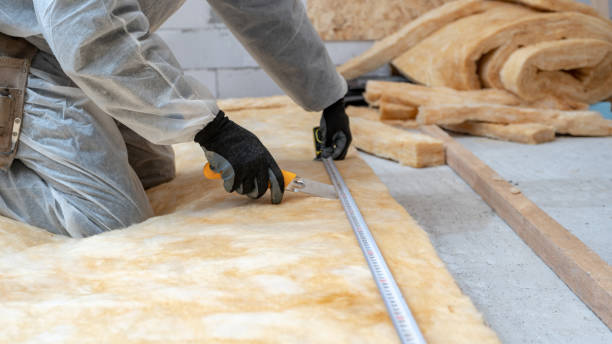
Insulation in your home can increase your family’s comfort, minimize heat loss, and reduce energy costs.
Let’s explore more about mobile home insulation.
How to Super Insulate a Mobile Home
Here, we answer several questions, including measuring insulation, what it involves, and why you need it in your manufactured home.

Benefits of Insulation in a Manufactured Home
As per the Department of Energy requirements, mobile homes developed before 1976 require insulation to be added.
A new manufactured home can also benefit when you add insulation.
Reduced Energy Bills
According to the Insulation Institute, homeowners stand a chance of saving 15% on energy from heating and cooling when they add insulation to their manufactured home.

The energy-efficiency of the heating and cooling in homes, developed many years ago, will increase, since most of them are poorly insulated to start with.
Various insulation projects can greatly boost energy efficiency in your home. Here are five effective insulation projects to implement:
- Window & Door Insulation: According to windows and doors Edmonton experts, upgrading to energy-efficient units, or sealing gaps around existing ones, prevents drafts and reduces heat loss. Double or triple-glazed windows, weatherstripping, and caulking can significantly improve a building’s energy efficiency by up to 55%.
- Attic Insulation: Insulating the attic prevents heat loss during winter and heat gain during summer, reducing energy consumption for heating and cooling. Insulating materials like cellulose, fibreglass, or spray foam can be used for this purpose.
- Wall Insulation: Adding insulation to external walls, either in the cavity or interior/exterior surface, can significantly enhance a building’s thermal performance. Spray foam, mineral wool, or rigid foam boards are suitable options.
- Basement and Crawlspace Insulation: Insulating basements and crawl spaces minimize heat loss through the building’s foundation, decreasing energy costs. Options include rigid foam boards, spray foam, or fibreglass batts.
Investing in these insulation projects can reduce energy consumption, lower utility bills, and improve overall comfort in a building.
Increased Comfort in Your Manufactured Home
Apart from saving on mobile home energy costs, your family will also enjoy the increased comfort.
Having an insulated manufactured home makes your family stay warm during winter and cool during summer.
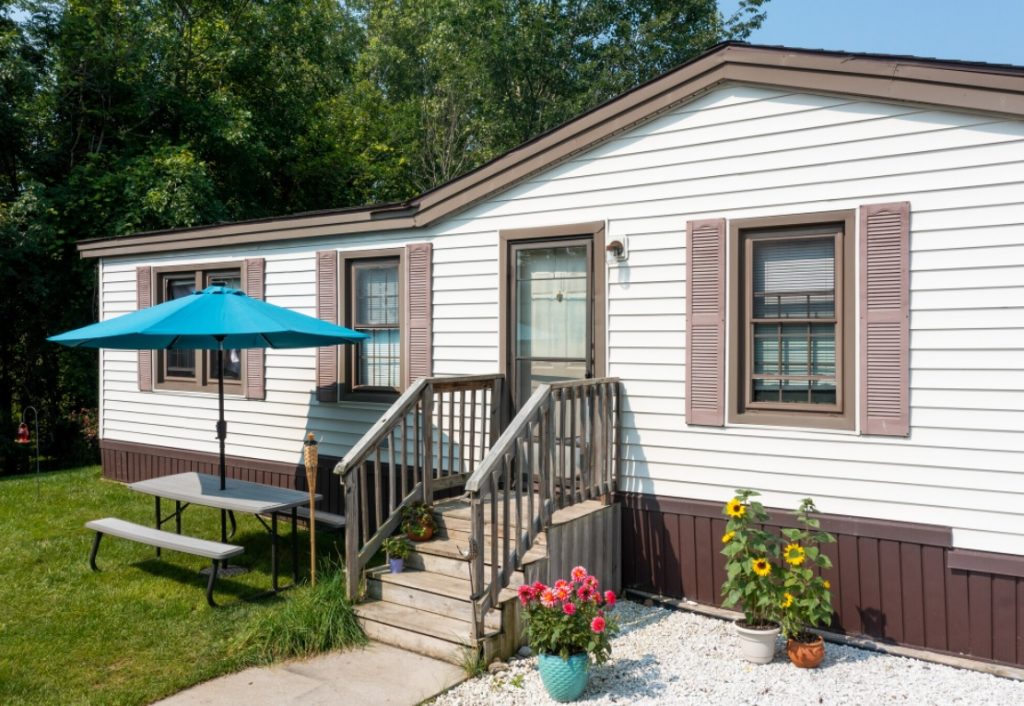
The R-Value
To select the best insulation for your manufactured home, you’ll have to consider its difficulty or ease of installation, the R-value, and the level of energy-efficiency you get for your effort and money.
Generally, heat energy flows from warm to cool areas. This means that during winter, the warm air in your manufactured home will escape outside.
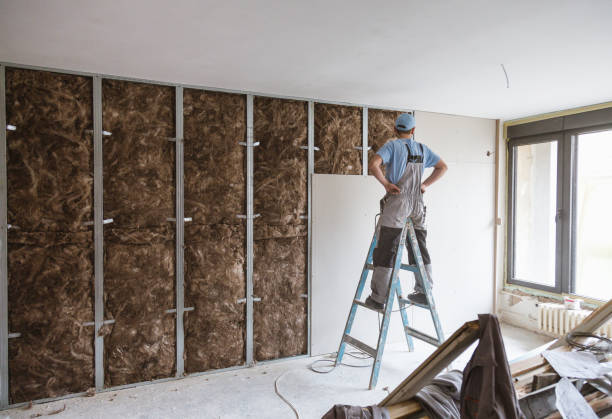
During summer, hot air from outside will try to flow into your mobile home. This is what constitutes convection and conduction.
The R-value measures the ability of a material to resist the flow of heat energy. A higher value means that the material is more effective at insulating your manufactured home.
Currently, the HUD Code recommends a minimum of R–19 for use in insulating ceilings, floor, and walls in a manufactured home.

Conduction in a Manufactured Home
Conduction refers to how heat energy travels through a material. Insulation works to prevent this conductive property.
With the perfect insulation, your home becomes more energy-efficient, thus, less heat energy will flow through your walls when there is cold air. It’s, therefore, critical that you install quality products in your manufactured home walls.
Convection in a Manufactured Home
Convection involves how heat energy circulates through the air.
Preventing the flow of air through convection, within openings and walls, controls the usage of mobile home energy, thus improving its energy-efficiency.

Popular Insulation Types in a Manufactured Home
Let’s focus on the different types of manufactured home insulation:
Blanket: Rolls and Batts
This is by far the most common insulation type for a mobile home. It is available in rolls (cylindrical pieces) and batts (rectangular pieces).
It’s created from flexible fibers and constitutes the best option for joint and stud spacing.
Foam Board
Where rolls and batts are flexible and soft, foam boards offer excellent thermal resistance and are quite rigid.
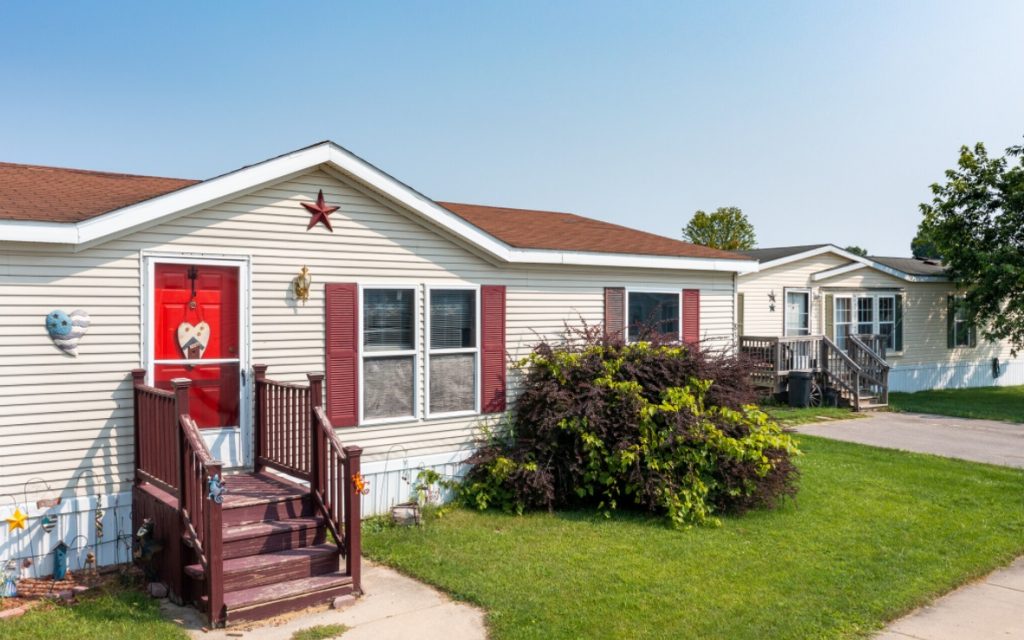
The foam acts as a belly board for manufactured homes and has proven effective for new roof overs.
Blow-In or Loose Fill
Blow-in and loose-fill are made of small particles that you can use to fit into any space with amazing flexibility.
For this reason, they’re perfect for areas with oddly shaped spaces and obstructions. It’s also used in a mobile home that was developed many years ago.
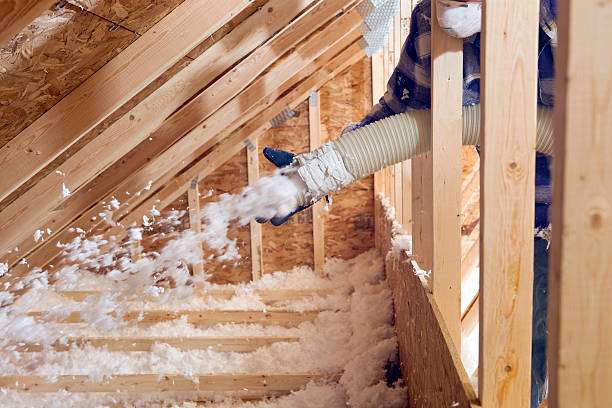
Sprayed or Injected Foam
Insulating a manufactured home using foam insulation has become very popular over the past few years.
Even though this insulation type is liquid, in the container, it will foam out and expand in all directions. It’ll also harden when you add insulation to your manufactured home.
Foam insulation also fills the smallest spaces to form an air barrier.
Injection foam is applied in enclosed spaces, such as walls. However, there are energy-efficiency professionals who have questioned the foam insulation ability.
Regular tests have revealed that the R-value of foam insulation isn’t as good as regular loose-fill or batt. The product is also messy and can get into places you didn’t expect, or want.
Materials Used in Mobile Home Insulation
Each of the insulation types above is made from various materials.
Fiberglass
Fiberglass is the most common insulation type used for insulating manufactured homes. This material doesn’t rot or burn.
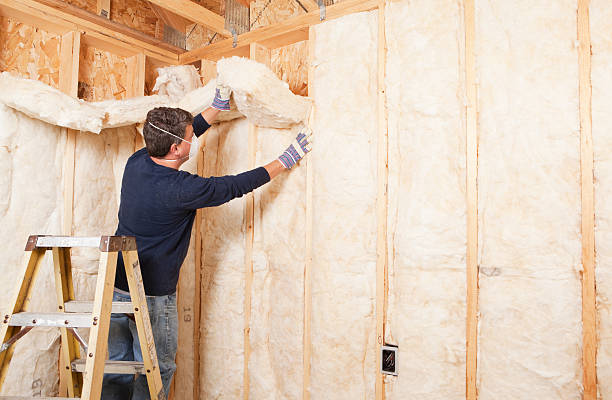
Fiberglass is a fiber-like material that is developed from glass. Its structure is developed from molten glass, formed into small fibers.
There are two types of fiberglass insulation:
Blown Fiberglass
Blown fiberglass insulation is the best option, if you’re seeking materials that save mobile home energy. It’s especially great if you’re doing a remodel.
Batt Fiberglass
It is a combination of glass and air that makes this insulation. Batt fiberglass is common between studs in manufactured home walls, however you can also use it between joists.
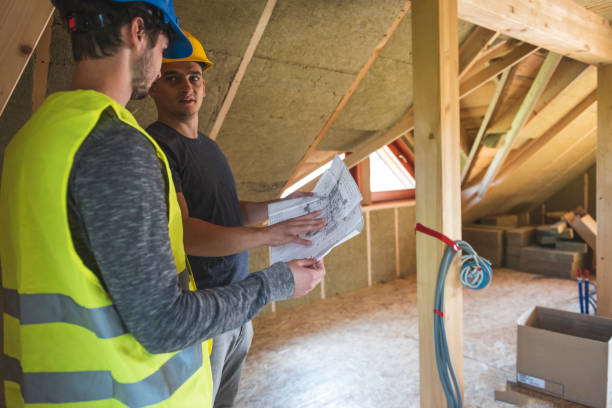
Batt insulation is developed either unfaced or faced. If you want to increase the energy-efficiency of your mobile home, go for the unfaced batts.
Advantages of Fiberglass
Since fiberglass is made from soft fibers, it’s very flexible. It’s also effective and will save you money.
For this reason, it has been used in most homes for decades.
To use fiberglass, it doesn’t require specialized tools except for skin protection and breathing masks.
Disadvantages of Fiberglass
Fiberglass traps moisture, unless you use plastic-sealed batts. For this reason, it can easily lose its effectiveness.
The small glass fibers from the material can be dangerous, healthwise, when you breathe it in. Research has shown that they can damage your lungs and lead to allergies. It can also cause damage to your skin.
The R-value of fiberglass also decreases with time, and, in many cases, batt insulation happens to be installed incorrectly. Homeowners tend to install rolled or batt fiberglass insulation inside out, thus reducing its energy-efficiency drastically.
Foam Board
Foam board is another common material used to insulate mobile homes. The materials are made from plastics.
Foam is available in different shapes, including rigid foam board. It is also sprayed as a liquid that hardens. Rigid foam is developed from various plastics, including:
- Polyurethane sprayed
- Molded expanded polystyrene (MEPS)
- Extruded Polystyrene (XPS)
- Expanded Polystyrene (EPS)
- Foamed-in-place polyurethane insulation
Advantages of Foam Boards
Rigid foam boards are reputable for offering a high insulating value as opposed to fiberglass. For instance, a spray-in foam is perfect for difficult-to-reach and awkwardly-shaped areas. It also eliminates the chances for moisture, pollen, dust, and mold.
Disadvantages of Foam Boards
The material is expensive compared to fiberglass structures. Foam boards can’t be installed as part of a DIY project and will always take longer to install.
Cellulose
Cellulose is developed from recycled paper instead of glass.
The other natural materials employed for insulation include:
- Wool
- Cotton
- Hemp
- Straw
Advantages of Cellulose
The material is an environmentally friendly option thanks to being made from recycled products. It doesn’t have the risk of lung damage.
Disadvantages of Cellulose
In most cases, you must replace it after every five years. You’ll require a professional to install it for you, unlike fiberglass that requires a DIY.
Insulation that is Best for Every Mobile Home Section
Apart from just selecting the type of insulation material that is perfect for you, one must also consider the best insulation for each section of the mobile home.
After making the decision, we recommend you contact a professional to install everything for you.
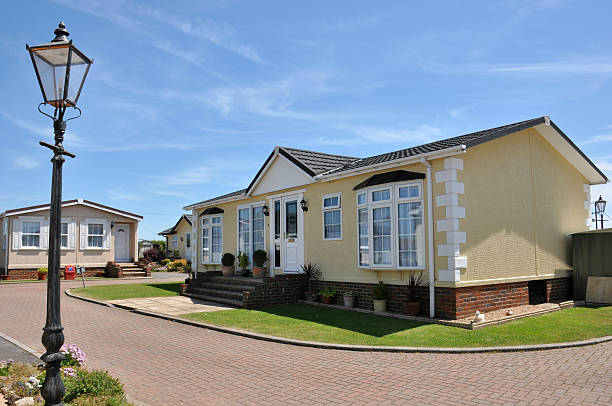
Mobile Home Belly and Floor
If you can completely access the underside of your manufactured home, you might consider using foam board or fiberglass rolls/batts.
Rolled and batt insulation can comfortably fit between manufactured home joists, but require several cuts.
Foam boards will also require much cutting, but it’s easier to handle.
If you don’t have full access to your mobile home belly and floor, consider using a blower to spray insulation. Ensure your floor is well insulated to keep your feet warm at all times.
Mobile Home Wall and Siding
Mobile homes that were developed before 1976 had poor insulation and thin sides. For instance, windows were poorly designed.
With that said, you can cut and size rolls and batts, to fit the inside walls of your manufactured home, using the stuffing or the ‘stuff it’ technique.

This is the best approach if you’re remodeling your mobile home.
Mobile Home Ceilings
Apart from having insulation in your walls and windows, you can also insulate your manufactured home ceilings.
Here, you can use foam spray or an injection method to prevent convection and conduction, thus making the home more energy-efficient..
The drill and plug method is the most common insulation approach to access the attic of your roof insulation or ceiling. There is also the option of blowing insulation into the attic, of your roof or ceiling, through the exterior of your mobile home.
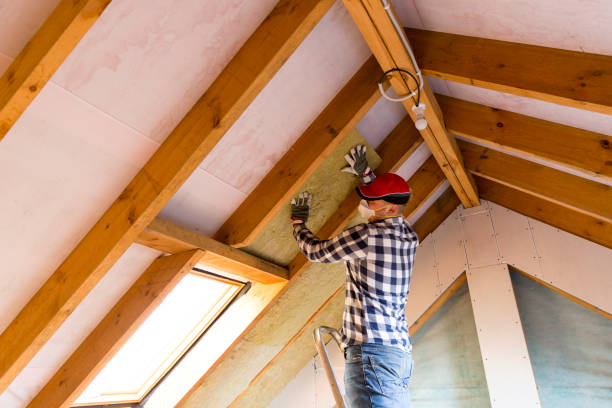
Even though it’s cheaper to insulate your roof and ceiling yourself, it would be better to hire a qualified contractor.
Replacing Old Windows
Replacing your old windows with new energy-efficient ones is a decision that will not only improve the appearance of your manufactured home’s exterior and interior, but also reduce energy consumption.
Always go for windows with insulated vinyl frames for maximum energy-efficiency. Vinyl windows also eliminate the need to use storm windows.

Even though storm windows are also energy-efficient, vinyl windows perform a better job.
DIY Spray Foam
Spray foam has been in use for a long time on manufactured homes.
Previously, there was only the option of using a specialized blower to blow insulation into a cavity of your manufactured home. For this reason, it was only accessible to people who could afford a company with high-quality equipment.
Nowadays, there are DIY kits that you can use to install insulation in your manufactured home. However, certain situations will require you to hire a professional.

For instance, you’ll need a professional who understands manufactured home plumbing and electrical systems, so you don’t mess anything up.
It would also help to have an understanding of evaporation and air sealing. Still, insulating yourself with spray foam is a smart manufactured home improvement approach that will save you energy and money.
Conclusion
It’s a fact that most affordable mobile homes aren’t insulated properly. Fortunately, insulating a mobile home is a pretty straightforward process.
With the technology available today, it’s easy to incorporate substantial R-value insulation into your mobile home, at an affordable price.
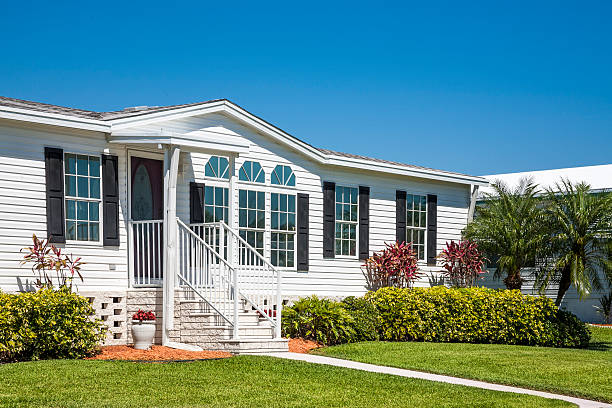
If you install insulation in your manufactured home, you’ll benefit from having a comfortable and warmer mobile home, whether your mobile home is new or was developed many years ago. You’ll also save a lot when it comes to mobile home energy bills.
Installing your windows, walls, or roof insulation is among the best improvements you can make to a mobile home, especially if it was developed several years ago.
We hope that you insulate your mobile home so you can live in a comfortable environment and minimize heat loss.









